Talk with our local travel specialist who can help organize your trip.
Annapurna Circuit Trek - A Complete Guide
Trekking to Annapurna Circuit is one of the most popular trekking adventures that one can do in Nepal. Several trekkers are visiting Nepal each year for this particular trekking adventure. It is one of the longest trekking routes that comprise some of the unique villages, forest areas, hills, and snow-capped mountains. The standard Annapurna Circuit Trek Itinerary is usually around 15-20 days; however, it depends totally on your ability to adjust to difficult situations and terrain. This Trek best suits someone who is planning for a long holiday and ready to spend more time on the high Himalayas of Nepal.
Annapurna Circuit offers you a lifetime experience with diverse weather, culture, lifestyle on your way to one of the most challenging trekking routes of Nepal. The trek route is approximately 170-230 km long with one of the world’s most amazing views, experiences, and adventures.
The blog aims at helping you understand, visualize, and plan your Annapurna Circuit Trek with one of the most detailed itineraries and information possible. We will provide you with the information on the best season to travel, the best routes to take, the expense to expect along with several other details. It is important to understand the fact that in the Annapurna Circuit ride, you will notice after almost every step you take the landscape and the scenery changes. This is the reason why it is considered one of the most challenging trekking routes in Nepal. The Buddhist culture influences most of the places that you pass by in these routes and you will see the villages decorated with prayer flags and monasteries.
Trip Facts
|
Distance |
170 – 230 (the distance may vary depending on the route) |
|
Duration |
15 to 20 days |
|
Permits required |
TIMS card and ACAP permit |
|
Starting Point |
Besisahar/ Syange /Jagat / Chame/Manang |
|
Finishing Point |
Muktinath / Jomsom / Nayapul |
|
Highest Altitude |
5416 m / 17769 ft (Thorong La Pass) |
|
Difficulty Level |
Medium to Difficult |
|
Expense |
Medium |
|
Accommodation |
Guest House, Tea House, Lodge |
|
Best season |
Spring (March-May) and Autumn (September – November) |
Table of Content
- The Highlight Of Trekking In Annapurna Circuit
- Reaching Bhulbhule - Popular Starting Point
- Getting TIMS And ACAP Permits
- Trekking Grade And Trek Preparation
- Food Available In The Trekking Route
- Accommodation Facilities On The Annapurna Circuit Route
- Internet Connectivity En Route
- Best Time For Annapurna Circuit Trek
- Altitude Sickness: How To Avoid Getting Sick?
- What To Pack For Trekking
- How Much Money To Carry?
- Where To Withdraw Money On The Annapurna Circuit?
- Travel Insurance For The Trek
- Annapurna Circuit Itinerary
- Annapurna Circuit Map
- Pisang, Manang, And Acclimatization For Thorong La Pass
- Tilicho Lake, Yak Kharka, Thorong High Camp And Muktinath Via Thorong La Pass
- Jomson, Tatopani, And Nayapul To Complete Circuit
- The Best Way To Do Annapurna Ciruit Trek, Self Guided Or Book With Company
The highlight of Trekking
- The best and quickest way of exploring the vast Annapurna region
- Majestic and snow-capped view of mountains like Annapurna, Dhaulagiri, and Machhapuchhre
- Green vegetation throughout the Trek with attractive landscapes
- Passing through the Thorong La Pass (5416 m)
- Passing via one of the sacred Muktinath Temple in Jomsom
- Enjoying the lifestyle and cultures throughout the village influenced by Tibetan Buddhism
Reaching Bhulbhule - Popular starting point
The circuit was opened for Trek officially in the year 1977 for all the trekkers. Since the opening of this circuit, most trekkers started their Trek from Besisahar in Lamjung District. Bhulbhule lies 7km ahead of Besisahar, and you can reach there from Kathmandu using the bus. You can reach up to Ngadi as well. Trekkers have their own choice of starting point as some of them prefer to reach Manang. With the construction of roads in recent years, it is now possible to reach Manang using vehicles and start the Trek from there as well. Some of the popular starting points for the trek to Annapurna Circuit are summarized below:
Besisahar:-The most popular and oldest starting point. However, with road networks being build to reach further places, it is less used as a starting point recently.
Bhulbhule:-Still a popular starting point that lies 7km ahead of Besisahar. You can reach Bhulbhule from Kathmandu using the bus or the vehicle arranged by your trekking agency.
Syange:- Lies 22 km ahead of Besisahar and is used by trekkers as their starting point. Accessible via Jeep and can spend the night here to start your Trek the next day.
Jagat:- 30 km ahead of Besisahar and can be reached by Jeep. If you start your Trek at Bhulbhule, you will reach Jagat on the second day of Trek.
Chame:- 70 km ahead of Besisahar, it lies at a higher altitude. Some people start their Trek here. It is advisable to make sure you are not developing any symptoms of altitude sickness as you will be traveling from an altitude of 700m to 2600m above sea level.
Manang:-Since road networks have been constructed in recent years; the accessibility has been made easy to reach Manang. Many trekkers prefer to start their Trek from Manang itself.
Getting TIMS and ACAP Permits
Before you start your trip and leave Kathmandu, make sure to have two permits with you. If you are traveling solo, you can visit Nepal Tourism Board Office in Pradashani Marga, Kathmandu, to get these permits. In addition, your travel agency can get these permits for you if you book your trip with them.
Since Annapurna Circuit Trek falls in the Annapurna Conservation area, you need to have TIMS (Trekking Information Management System) and ACAP (Annapurna Conservation Area Permit). These permits are checked in various checkpoints during your Trek. You can find the details on how to get TIMS Card and Trekking permits in Nepal.
Alternatively, you can get these permits at ACAP Counter located at Besishahar. The Fee Structure is as below:
- ACAP for Foreigners: NRS 3000 (Approx. USD 25)
- ACAP For SAARC Nationals: NRS 200
- TIMS Fee: NRS 2000 (Approx. USD 18)
The contact numbers for the offices where one can get the above permits are:
- Nepal Tourism Board, Kathmandu 01-4256909
- Nepal Tourism Board Service Center, Pokhara: 061-465292
- ACAP entry permit counter, Besisahar
Trekking Grade and Trek Preparation
The extremity level of this Trek is mild to moderate; hence you don’t need to do hardcore exercise while preparing for the Trek.
However, it is recommended that you do some light exercise to make yourself up and to run. The Trek requires you to walk 5-6 hours each day, covering around 15-20 km per day. Some days during the Trek require you to walk even 7-8 hours to reach your accommodation, and hence you must be ready for the challenge. You can do some simple cardio exercise, and you are ready for the Trek to conclude with one sentence.
Featured Trips
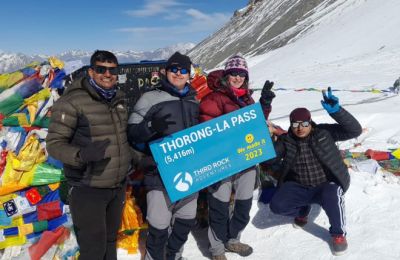
Annapurna Circuit Trek with Tilicho and Ice Lakes Trek - 14 days
Experience the thrill of Annapurna Circuit Trek with Tilicho and Ice lake and discover the beauty of the Himalayas! This trek takes you through beautiful landscape, diverse cultures and stunning views.
Inquire Now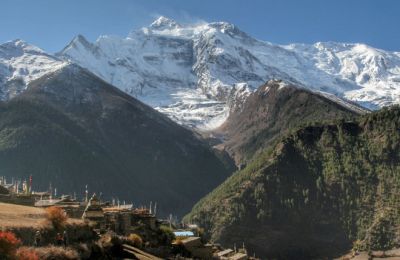
Short Annapurna Circuit Trek Itinerary - 11 days
Short Annapurna Circuit Trek encircles the amazing Annapurna range in the quickest possible time frame of 11 days. This itinerary is best for those trekkers looking to experience the major highlights of the Annapurna Circuit like Manang, Thorong La pass, and Muktinath
Inquire NowWhere to travel next?
Get help from our travel specialists for holiday ideas that matches your interests.
Food Available in the Trekking Route
You will find a very diverse menu in most of the guest houses. They provide you with all the varieties from the local cuisine to western dishes. Your tiredness will go away looking at the food items available when you reach your accommodation. You can expect bakery items, tea, coffee (real ones), to almost all kinds of dishes in this Trek route. In addition, there are soups (noodles, veggies, garlic, tomato, chicken, etc.) available to boost your immunity for the next day's trek. Since this is a hilly region, you will be greeted with varieties of hot beverages.
Some of the cities in the route can offer you popular western fast foods like pizza, burgers, and hot dogs. However, the best value of the money you pay for the food can be the local Dal Bhaat, which contains rice, lentils, veggies, or non-veg items, and you are free to add more rice dal and curry at the end. This is best suited for someone who is traveling on a low budget.
Accommodation Facilities on the route
Talking about the lodging, guesthouses & tea houses can be easily found all along the Trek. In general, every teahouse & hotel provides a room based on sharing twins. The room is big enough for you to sit back, chill, and relax. Don’t be surprised to find a guest house that is well equipped with electricity, Wi-Fi, and hot showers. You can find a guest house with such facilities in the almost whole route of the Trek. You can charge your devices and get yourself connected to your nearby ones.
All the guesthouses that you find in the route are of similar category and have similar facilities. The guesthouse at the higher altitude has basic facilities and very inconsistent Wi-Fi connections. However, having an attached bathroom to use in the night will make you forget everything when you don’t have to rush outside in the cold. Some hotels in the higher altitudes may charge you $1 -$2 extra for using the Wi-Fi and electricity for charging your devices. You can allocate 20-30 USD per day for your accommodation and meal based on the expenses.
Internet Connectivity en Route
You will be surprised to see that most of the route in the trek to Annapurna Circuit is the availability of Internet connection. Most of the stopover places have guest houses that will provide you with Wi-Fi connections that will work well. The guesthouses will charge you 1-2 USD for the usage of Wi-Fi. If you are using a trekking agency for the Trek, they might have booked it for you. So please ensure you have checked your details well with the agency before you travel. The only place with limited or no internet connection is the Thorong High Camp, where you might be charged few extra dollars.
Best time for trekking to Annapurna Circuit
The weather in Nepal is best suited for any trek during two seasons. The best time to visit the Annapurna circuit is during March-May or September - November. You will find more people trekking during October as this is one of the busiest months in the Nepali Tourist Industry. It is advised to avoid June - August as this is mostly the rainy season in Nepal and not the best time for hiking.
Similarly, during December - February, winter in Nepal, you will find it difficult to complete the Trek. Some of the businesses in the higher altitude might be closed due to low temperatures and heavy snow.
Since the Trek is done from the low altitude around 750m above the sea level to a higher altitude of 5400m above sea level, you might have to choose the time to trek wisely. There is a possibility of getting altitude sickness in this Trek; this is why you must make sure you always have an extra day for acclimatization to high altitude.
Altitude Sickness: How to avoid getting sick?
Like mentioned earlier, this Trek is a very diverse trek where you travel from a very low height to a very high altitude. You become prone to sickness, and you must take care of your health properly. Make sure you plan your trip to have one extra day in Manang to familiarize yourself with the high altitude. You will notice the symptoms of altitude sickness as you descent the altitude of 2500m and above. Sometimes you may start developing symptoms even below that height.
Symptoms of altitude sickness
- Fatigue
- Dizziness
- Nausea
- Headache
- Shortness of breath
- Mental fog
If you develop any of these symptoms, calm yourself and don’t panic. You need to do some basics that can help you to stay fit.
To avoid yourself from getting altitude sickness, make sure you:
- Walk/trek through the route so that your body can acclimatize and get more time to adjust rather than taking a jeep/bus.
- Make sure to have a day to rest / acclimatize while you are hiking uphill
- Don’t drink alcohol
- Drink plenty of water while you are trekking.
- If you develop altitude sickness symptoms, don’t trek, let your partner know about your situation, and take a rest. However, if the symptoms persist for more than 24 hours, seek medical attention.
You can take the water pill and you, which can be found in the pharmacy as Acetazolamide, some pain relief pills, and inhaler as basic first aid kits.
What to Pack for Trekking
Before you leave Kathmandu, make sure you do your shopping right. There are several stores in the Thamel area where you can get all the items needed for your Trek. Alternatively, you can get your trekking gear in Pokhara, but we suggest you do the shopping in Kathmandu to avoid missing any important items. The details are found on the list for trekking in the Nepal blog.
- Full sleeve t-shirts that can dry quickly
- Hike boots/pants
- Woolen socks/caps
- Raincoat
- Hat or cap/sunglasses
- Gloves
- Trekking stick/compass
- Jacket (Fleece and Down)
- Lots of energy bars
- Water bottle
- Sleeping bags / flashlight
- IDs and essential permits
- Sunscreen / Sanitizer
- Toothbrush / Tooth Paste
- First aid kit (basic)
How much money to carry?
Trekking to Annapurna Circuit is not so expensive if you know how to manage your travel properly. It will cost you around 900-1400 USD per person to complete the whole Trek. These expenses include your accommodation, food, beverages, transport, and any additional expenses you make during your Trek. The above calculation is made based on 15 days trek. We asked to have more amount for someone who prefers to go to every place in the route, including the Poon Hill trek. If your book your Trek with a trekking agency, you still need to carry some extra amount as you might want to give tips to your porter, have some extra drink or want to do some shopping. The charge ranges from 1500-4000 USD depending on the services, types of company (local or international) facilities, and trekkers.
Where to withdraw money on the Annapurna Circuit?
It is not wise to carry all the money with you from Kathmandu. You may withdraw a minimal amount in Kathmandu as there will be many options until you are in Pokhara to withdraw your money. After you leave Pokhara, your options get limited, and you must make sure you carry enough cash then after. Besisahar is the last city with several ATMs before you trek through Thorong La Pass and descend downwards. Manang has some ATMs, too but makes sure your cards are compatible with these machines. Some hotels on the way offer you to charge some extra amount to give you money against the transfer you make. This can be used in case of an emergency. You will find 2-3 ATMs at the end of the circuit trek at Nayapul.
Travel Insurance for the Trek
Although you may never be asked during the entire Trek, it is compulsory to have travel insurance for the trek.. You are required to fill in your insurance company's information while you fill up the form for the permit. You can choose the company which has previous experience with outdoor activities and buy your insurance. There are a lot of trekking destinations in Nepal, and several people visit each year for trekking. Therefore, it is wise and safe to have travel insurance as this Trek tends to make people sick. World Nomads provide one of the most flexible Travel Insurance; you can check with their website for a quotation.
Annapurna Circuit Trek Video
Annapurna Circuit trekking Itinerary
The itinerary may vary depending on your capability to Trek and the agency you choose to plan your trip. However, it is common usually similar to places that people end of during rest time. Below is a brief itinerary for the Trek ending in Jomsom.
|
Day-1 |
Arrival in Kathmandu, trip overview, and rest in Kathmandu |
|
Day-2 |
Travel to Jagat from Kathmandu via Besisahar (1300m/4264ft) |
|
Day-3 |
Reach Lower Pisang, driving via Chame (3200m/10498ft, 2670m/8759ft) |
|
Day-4 |
Trek to reach Manang (3540m/11,613ft) |
|
Day-5 |
Acclimatization Day-in Manang (hike to Ice Lake at 1600m/15,091ft and return) |
|
Day-6 |
Second Day-for acclimatization (some prefer to continue their Trek on the second Day-) |
|
Day-7 |
Trek from Manang to Sri Kharka (4,000m/13,122ft) |
|
Day-8 |
Trek to reach Tilicho Base Camp (4150m/13,614ft) |
|
Day-9 |
Hike to Tilicho Lake (4920m/16141ft) and return to Sri Kharka |
|
Day-10 |
Trek to Yak Kharka (4,050m/13,286ft) |
|
Day-11 |
Reach Muktinath (3760m/12,335ft) via Thorong La Pass (5416m/17,769ft) |
|
Day-12 |
Muktinath Temple Visit and reach Jomsom (2,720m/8932ft) |
|
Day-13 |
End of the circuit, fly back to Pokhara in 25 min flight (800m/2,625ft) |
|
Day-14 |
Drive back to Kathmandu (1,400m/4,593ft) |
|
Day-16 |
Departure from Nepal |
The itinerary shared above is for the shorter version of the Trek. You can continue to trek from the Muktinath temple to reach Jomsom and go further until Nayapul. You can find bus and jeep services from Nayapul to return to Pokhara and then to Kathmandu. Some of the major places that you come across the trekking to Annapurna Circuit and their major highlights are explained briefly in the section below:
Trekking Map
Featured Trips

Annapurna Circuit Trek with Tilicho and Ice Lakes Trek - 14 days
Experience the thrill of Annapurna Circuit Trek with Tilicho and Ice lake and discover the beauty of the Himalayas! This trek takes you through beautiful landscape, diverse cultures and stunning views.
Inquire Now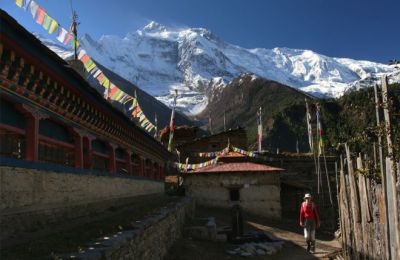
Annapurna Circuit and Base Camp Trek - 18 days
Annapurna Circuit and Base Camp trek is a combination of three popular treks in Nepal’s Annapurna Region. Explore Annapurna Circuit, Ghorepani-Poon Hill and Annapurna Base Camp
Inquire NowWhere to travel next?
Get help from our travel specialists for holiday ideas that matches your interests.
Pisang, Manang, and Acclimatization for Thorong La Pass
Pisang is a beautiful village ahead of Chame, and there are privileges of staying in hotels, lodges, and tea houses in almost every part of the route. However, when you are in Manang, make sure you look for a nice place well in time. Pisang is an uphill trek from Chame, and it takes around 6 hours to reach there. You will feel the height increasing slowly, and the Trek will take a toll on you. Pisang is located at an altitude of 3250m above sea level.
Manang is a beautiful hill station located at the height of 3540 m above sea level. You can see the beautiful sights of Annapurna II, Gangapurna, Tilicho while going up from Geru. This route has all the majestic views of mountains that keep you energized and move towards your destination. You can also see a century-old monastery which is also the biggest in the whole Manang region.
Trekking to Annapurna circuit route offers you the opportunity to see Tibetan culture through community settlements. While you are at Manang, make sure you take this as your chance to acclimatize with the altitude. You will find many people who were not staying overnight and one extra day. To prepare yourself and get ready for trekking at around 4500m, you can hike around Manang for the day. These places will help you prepare for the extremities you might have to face in the next few days.
It is suggested to have a day or two depending on your health and physical condition to get used to the environment.
Tilicho Lake, Yak Kharka, Thorong High Camp, and Muktinath via Thorong La Pass
Yak Kharka is an old Tibetan settlement where kharka means pasture, and this is where you can find the number of Yak (Himali Cow). Yak Kharka lies at the altitude of 4200 m above sea level and is around a 4-5 hours trek from Manang. You will continue to be followed by the peaks like Annapurna II and Tilicho Lake along this route.
Another day and another 5 hours of a trek through the bank of Jorsang river will take you to a place called Thorong Phedi (Thorong High Camp). This will be your stop for the night, and you can take another day to get yourself acclimatize before you trek through the most awaited Thorong La pass. Thorong high camp lies at an altitude of 4525m above sea level. During this route, you have to walk through a narrow trail passing by a landslide area. However, you need not worry much about the place for a stopover in the high camp area as this is a popular station before trekkers trek through Thorong La Pass.
The difficult terrain and rough-shaped trail will make it difficult for you to walk through, but the beautiful view above will keep you motivated to walk through. Thorong La Pass is situated at the altitude of 5416m and is the world’s highest pass. You are greeted with the panoramic view of beautiful mountains from this place which makes you forget all the hardship you went through. The good thing about this Trek is once you trek through the pass, you are greeted with the route that goes downhill. It gives you some relief as you need to go downwards to another popular place Muktinath. The Trek will take you around 4 hours, depending on your speed of walking. Don’t forget to make memories while you are standing in the world’s highest pass and the most difficult part of the Trek. You will reach Muktinath by the dawn, where you can find several places to stay. Many people end their Trek right in Muktinath and plan to get back to Pokhara or Kathmandu from here.
Jomson, Tatopani, and Nayapul to complete circuit
This route's next leg has very few people who have the guts and energy left to Trek to another popular destination Jomsom. Jomsom has a large number of visitors each year, especially during the winter, to watch the snowfall. A road route can be used, and you will find a Jeep and bus to travel. But the real fun is to trek through and enjoy nature as close as possible.
Muktinath has the jeep services available, giving options for people who don’t have time and energy left for the Trek. It is suggested that you walk through to Jomsom, and if you are tired, you can then take a bus or Jeep to travel back to Pokhara.
Reaching Tatopani has two options, taking a bus from Muktinath or Jomsom or trekking through the route. If you prefer to take a bus ride, it will cost you around 900 NPR from Jomsom. Based on your time availability, you can end your Trek anywhere in Muktinath, Jomson, Tatopani, or Nayapul... In addition, you can go to the hot springs around this place; Tatopani's name comes from these hot springs. While you continue your Trek to reach Ghorepani, you will see some trekkers coming from the opposite direction as well. The reason is this has overlapped with another popular trekking route to Poon Hill.
At the End of the Annapurna Circuit Trek between Ghorepani and Nayapul, you can find several trekkers.
The Best Way to do Annapurna Circuit Trek
Self Guided or Book with Company? One of the most asked questions by many trekkers while they plan to trek in Nepal. There are always two sides of the coin, and likewise, there are both merits and demerits of doing a self-planned trek or using any trekking agency. Let’s discuss both of them with pros and cons.
A self-planned solo trek (individual Trekkers)
If you are planning to trek alone in Annapurna Circuit, it is highly recommended that you have prior experience of Trek in Nepal. You must understand that it is not an easy trek route to pass through Thorong La Pass, which is the highest pass in the world. You might risk your health, and it can be fatal in extreme conditions, which you might miss if you decide to trek solo. Another issue you might face as a solo trekker is when you have to book hotels during peak time. The peak season in the Annapurna Circuit has a large number of visitors, and hotels might be full. Therefore, it is not recommended to do the solo Trek, especially if it is your first visit to Nepal and you have no prior trekking experience at a higher altitude.
The drawback of having a self-planned trek is that you must take care of everything yourself. Your backpacks, accommodation, permits, itinerary, and everything you need to carry during the Trek must be arranged by yourself. You are going to miss professional help from your guide during extreme times. But this will be your opportunity to learn as well.
Annapurna circuit trekking with a Company
If you prefer a hassle-free trek with no fear of missing out on anything, this can be the best option for you. The Trek price will go high compared to a self-planned trek as you need to pay for different services. The advantage of using a company is that you will be provided with helping hands from the Trek beginning. You don’t have to think about accommodation, trekking itinerary, trekking permits, TIMS, guide, etc. You are recommended to book your Trek, using the services of trekking agencies which can assist you in every possible way. It is not preferable to plan your Trek during February as this is not the right time to trek in the region.
Like we mentioned earlier, the only disadvantage will be the amount to be expended can go high. Similarly, you will have to stick to their plans and itinerary. However, saying all this, you can enjoy the professional guidance and know the places better while walking with the experienced guide.
Please write in our comment section for anything that you feel might be missing in the guide or help fellow trekkers. The information and the fee mentioned in the guide are based on current dates and might change.
- Written by: Ashes Timsina
Updated: Feb, 22, 2023

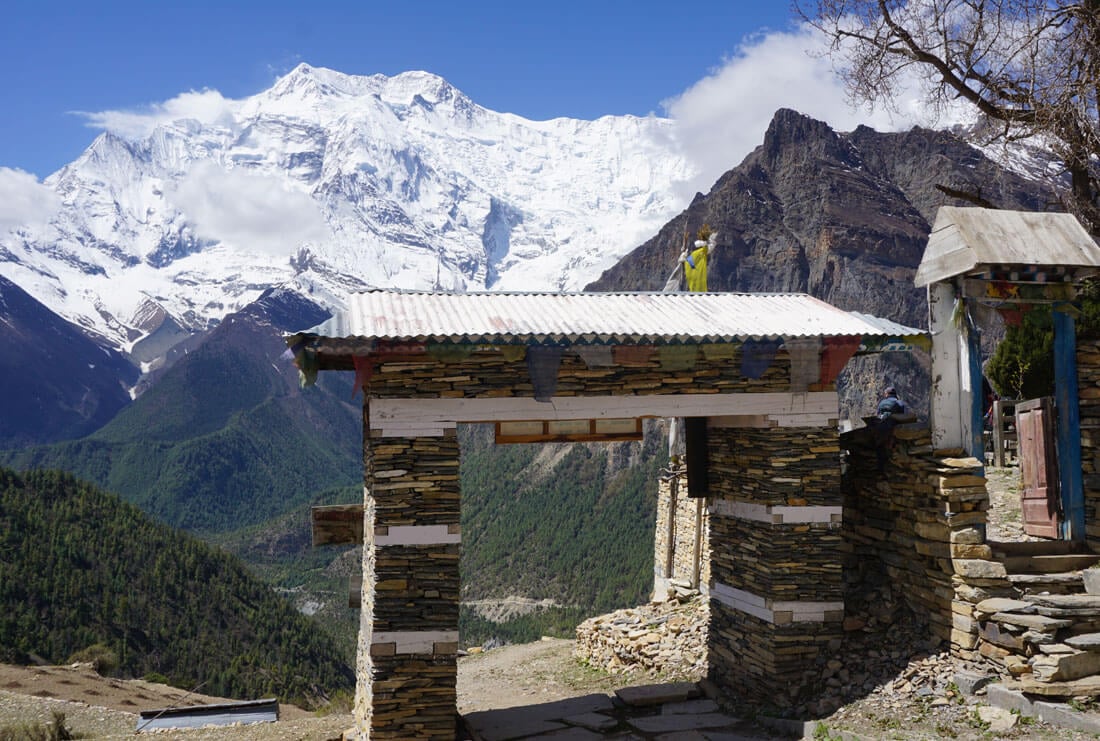












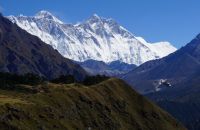
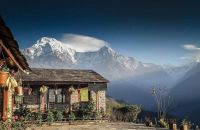
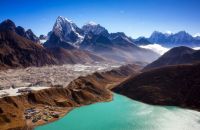
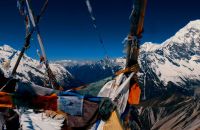
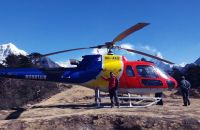
















Recent Comments